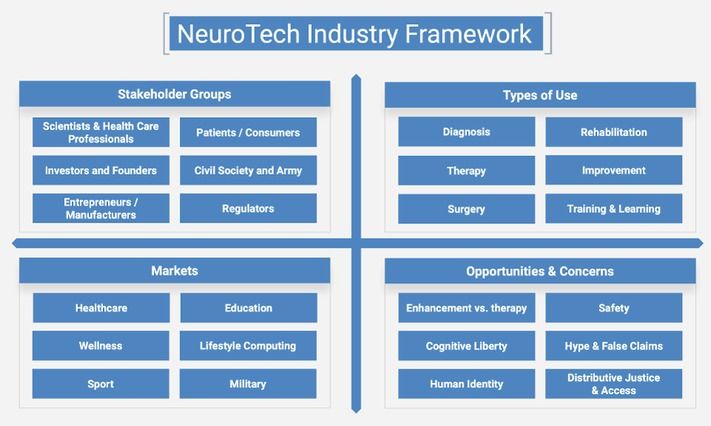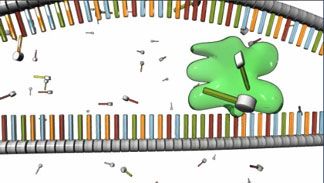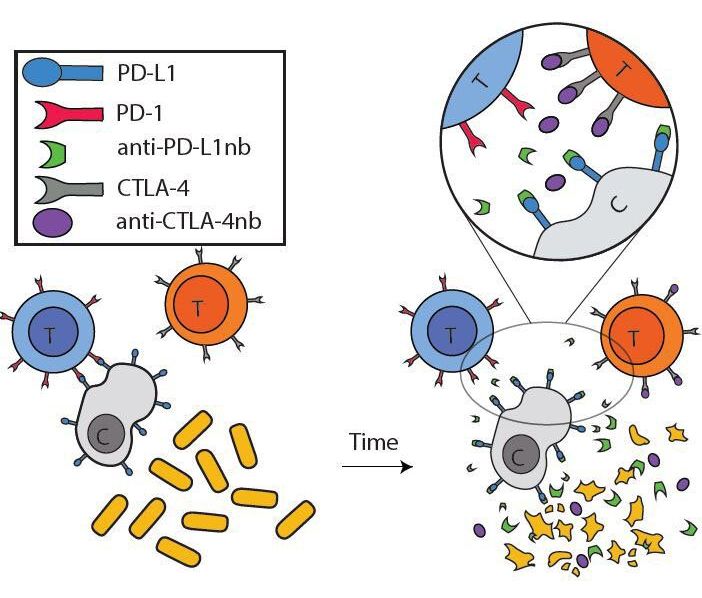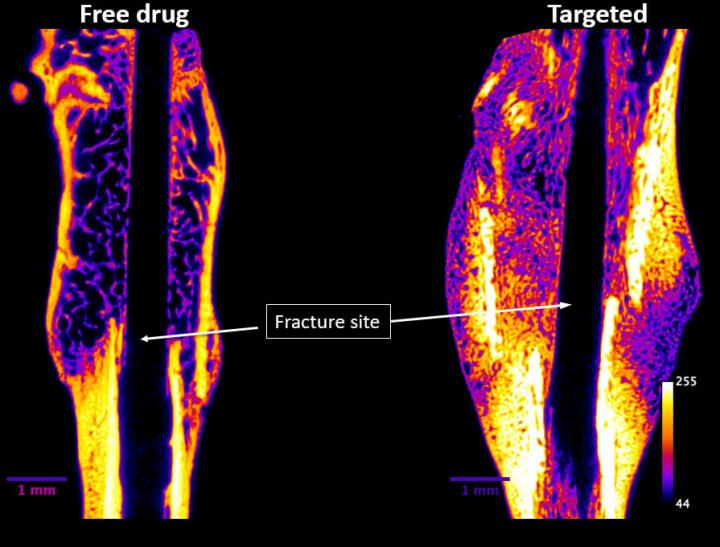Category: biotech/medical – Page 2,391

AI Predicts Coronavirus Vulnerable to HIV’s Atazanavir
An international collaboration between researchers at Deargen and Dankook University in the Republic of Korea, and Emory University in the United States, have published a prediction model for antiviral drugs that may be effective on 2019-nCoV.
The work is published in the article “Predicting commercially available antiviral drugs that may act on the novel coronavirus (2019-nCoV), Wuhan, China, through a drug-target interaction deep learning model” posted on the bioRxiv preprint server.
When an international team used an AI model to suggest available drugs that could be used against 2019-nCoV, the top candidates targeted viral proteinases.

How AI Is Advancing NeuroTech
The idea is to use AI to develop a platform for detecting biomarkers from neural data. Then long-life neural interfaces (connections that allow computers to read and write neural data directly to and from the body) could be combined with a deep intelligence system trained to assess biomarkers directly from neural data.
If the AI platform is able to understand the “language” of the nervous system it could be used in closed-loop experiments to test neuromodulation therapy on new targets. This could accelerate the development of treatments for a number of chronic conditions and would also be a big step closer to real-world clinical applications of AI within the body. This progress could create a new way to investigate medical conditions, accelerate the detection of neural biomarkers, and open the door to a new generation of AI-based neural medical procedures.
NeuroTech is one of the most promising areas of BioTech. In the last 20 years private capital funds invested more than $19 billion in the sector, and annual growth of investment in the sector is 31%. Some NeuroTech subsectors are already well-established with practical implementations and products on the market. Over the next several years, many early-stage startups will evolve into mature companies and bring new NeuroTech products to market. Advances in AI and increased integration of computers and biology could lead to improved brain health for people all over the world.

The Information in DNA Is Decoded by Transcription
DNA is essentially a storage molecule. It contains all of the instructions a cell needs to sustain itself. These instructions are found within genes, which are sections of DNA made up of specific sequences of nucleotides. In order to be implemented, the instructions contained within genes must be expressed, or copied into a form that can be used by cells to produce the proteins needed to support life.
The instructions stored within DNA are read and processed by a cell in two steps: transcription and translation. Each of these steps is a separate biochemical process involving multiple molecules. During transcription, a portion of the cell’s DNA serves as a template for creation of an RNA molecule. (RNA, or ribonucleic acid, is chemically similar to DNA, except for three main differences described later on in this concept page.) In some cases, the newly created RNA molecule is itself a finished product, and it serves an important function within the cell. In other cases, the RNA molecule carries messages from the DNA to other parts of the cell for processing. Most often, this information is used to manufacture proteins. The specific type of RNA that carries the information stored in DNA to other areas of the cell is called messenger RNA, or mRNA.

Tabletop storage: Georgia Tech looks to SMASH an exabyte into DNA ‘sugar cube’
Georgia Tech Research Institute (GTRI) is looking into ways to speed up DNA-based cold storage in a $25m Scalable Molecular Archival Software and Hardware (SMASH) project.
DNA is a biopolymer molecule composed from two chains in a double helix formation, and carrying genetic information. The chains are made up from nucleotides containing one of four nucleobases; cytosine ©, guanine (G), adenine (A) and thymine (T). Both chains carry the same data, which is encoded into sequences of the four nucleobases.
GTRI senior research scientist Nicholas Guise said in a quote that DNA storage is “so compact that a practical DNA archive could store an exabyte of data, equivalent to a million terabyte hard drives, in a volume about the size of a sugar cube.”

Designer probiotic treatment for cancer immunotherapy
Researchers at Columbia Engineering have engineered probiotics to safely deliver immunotherapies within tumors. These include nanobodies against two proven therapeutic targets—PD-L1 and CTLA-4. The drugs are continuously released by bacteria and continue to attack the tumor after just one dose, facilitating an immune response that ultimately results in tumor regression. The versatile probiotic platform can also be used to deliver multiple immunotherapies simultaneously, enabling the release of effective therapeutic combinations within the tumor for more difficult-to-treat cancers like colorectal cancer. The study is published today in Science Translational Medicine.
Antibodies that target immune checkpoints, PD-L1 and CTLA-4, have revolutionized cancer immunotherapy treatments, achieving success in a subset of cancers. However, systemic delivery of these antibodies can also cause substantial side effects with high percentages of patients reporting adverse reactions. Furthermore, although combinations of these therapies are more effective than single therapy regimens, they also produce severe toxicities, sometimes leading to drug discontinuation. The team, led by Tal Danino, assistant professor of biomedical engineering, aimed to address these challenges.
“We wanted to engineer a safe probiotic vehicle capable of delivering immune checkpoint therapies locally to minimize side effects,” says Danino, who is also a member of the Herbert Irving Comprehensive Cancer Center and Data Science Institute. “We also wanted to broaden the versatility of the system by producing a range of immunotherapeutic combinations, including cytokines that could further elicit antitumor immunity, but are otherwise difficult to systemically deliver because of toxicity concerns.”
Scientists discover mysterious never-before-seen virus in Brazil
Mysterious-new-virus-unknown-origin-emerges-lake-Brazil.
Scientists have discovered a mysterious never-before-seen virus in a lake in Brazil and have named it after a mermaid who lured soldiers underwater to their death.
Yaravirus, from the mythological mermaid Yara, has left scientists ‘puzzled’ because it doesn’t appear to be related to any other viruses in the world.
Researchers found over 90 per cent of Yaravirus genes have never been seen before, making it wholly unique.

Injectable drug for faster healing of bone fractures prepares for clinical trials
IMAGE: Novosteo, a Purdue University-affiliated startup, is advancing a technology shown to repair bone fractures faster and at greater benefit to a patient. The image above shows fractured femurs at four… view more
Credit: Novosteo/Philip S. Low
